
Central America is commonly said to include Guatemala, Belize, El Salvador, Honduras, Nicaragua, Costa Rica, and Panama. This definition matches modern political borders. Central America begins geographically in Mexico, at the Isthmus of Tehuantepec, Mexico's narrowest point, and the former country of Yucatán (1841–1848) was part of Central America. At the other end, before its independence in 1903 Panama was part of South America, as it was a Department of Colombia. At times Belize, a British colony until 1981, where English instead of Spanish is spoken, and where the population is primarily of African origin, has been considered not part of (Spanish-speaking) Central America.

The Federal Republic of Central America, originally known as the United Provinces of Central America, was a sovereign state in Central America which existed from 1823 to 1839. The federal republic was composed of five states: Costa Rica, El Salvador, Guatemala, Honduras, and Nicaragua. The federal republic was bordered to the north by Mexico, to the south by Gran Colombia, and on its eastern coastline by the Mosquito Coast and British Honduras.
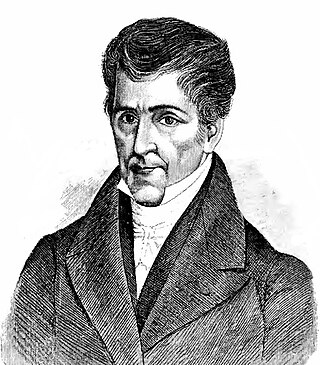
José Cecilio Díaz del Valle was a philosopher, politician, lawyer, and journalist and one of the most important figures in Central America during the transition from colonial government to independence, displaying a wide-ranging expertise in public administration management.
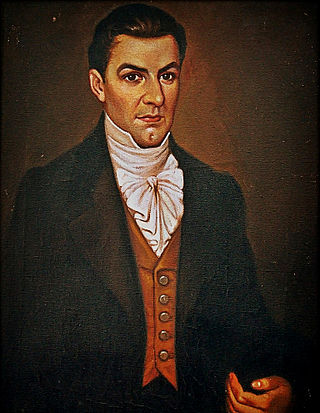
Manuel José Arce y Fagoaga was a Salvadoran statesman and military officer who served as the first president of the Federal Republic of Central America from 1825 to 1829.

José Rafael Carrera y Turcios was the president of Guatemala from 1844 to 1848 and from 1851 until his death in 1865, after being appointed President for life in 1854. During his military career and presidency, new nations in Central America were facing numerous problems: William Walker's invasions, liberal attempts to overthrow the Catholic Church and aristocrats' power, the Civil War in the United States, Mayan uprising in the east, Belize boundary dispute with the United Kingdom, and the wars in Mexico under Benito Juárez. This led to a rise of caudillos, a term that refers to charismatic populist leaders among the indigenous people.
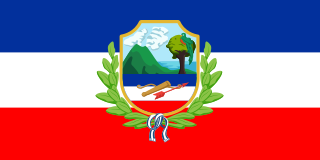
The State of Los Altos, commonly known as Los Altos, was the 6th state of the Federal Republic of Central America from 1838 to 1840 and a short-lived independent republic from 1848 to 1849. Its capital was Quetzaltenango. Los Altos occupied eight departments in the west of present-day Guatemala as well as the Soconusco region in the Mexican state of Chiapas.
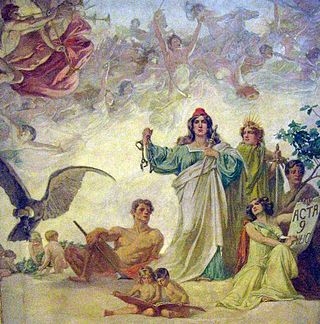
What today is commonly referred as the Independence of Argentina was declared on July 9, 1816, by the Congress of Tucumán. In reality, the congressmen who were assembled in Tucumán declared the independence of the United Provinces of South America, which is one of the official names of the Argentine Republic. The Federal League Provinces, at war with the United Provinces, were not allowed into the Congress. At the same time, several provinces from the Upper Peru that would later become part of present-day Bolivia, were represented at the Congress.
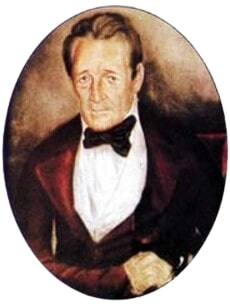
Pedro José Antonio Molina Mazariegos was a Central American politician, considered one of the founders of liberalism in Guatemala.

José Matías Delgado y de León was a Salvadoran priest and doctor known as El Padre de la Patria Salvadoreña.
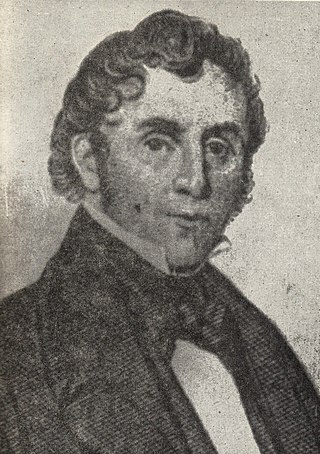
Juan Vicente Villacorta Díaz was a Central American politician. From July 10, 1823, to March 15, 1824, he was a member of the triumvirates that governed the Federal Republic of Central America. From December 13, 1824, to November 1, 1826, he was head of state of El Salvador, while it was a state of the Central American Federation.
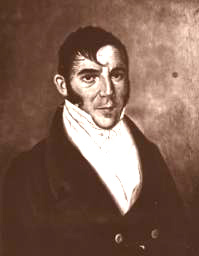
José Felipe Mariano Gálvez was a jurist and Liberal politician in Guatemala. For two consecutive terms from August 28, 1831, to March 3, 1838, he was chief of state of the State of Guatemala, within the Federal Republic of Central America. In 1836, he was elected a member of the American Philosophical Society.

Mariano Prado Baca was a Central American lawyer and a four-time, liberal chief of state of El Salvador, while it was a state in the Federal Republic of Central America.
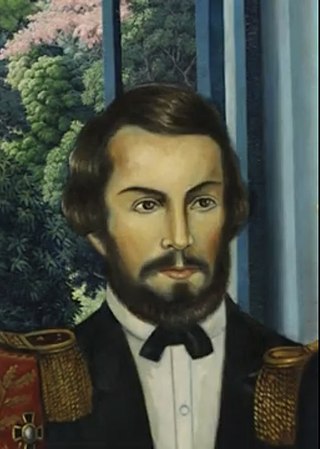
Juan Manuel Rodríguez was a Salvadoran revolutionary against Spain and later president of the State of El Salvador within the Federal Republic of Central America.
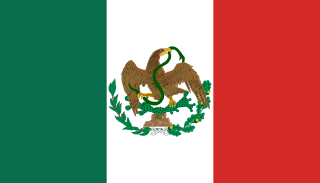
The Supreme Executive Power was the provisional government of Mexico that governed between the fall of the First Mexican Empire in April 1823 and the election of the first Mexican president, Guadalupe Victoria, in October 1824. After Emperor Iturbide abdicated, the sovereignty of the nation passed over to Congress, which appointed a triumvirate, made up of Guadalupe Victoria, Pedro Celestino Negrete, and Nicolas Bravo, to serve as the executive, while a new constitution was being written.
The Conservative Party was one of the two major political parties in Guatemala during the nineteenth and early twentieth century. The Conservative Party originated in the Serviles political group—consisting primarily of merchants and estate owners—representing a strong central government and a continuation of the colonial-era privileges. The Conservatives sought to preserve the power and privileges of the Catholic Church, as well as several of the existing monopolies—particularly the tobacco monopoly and the consulado. The Conservative Party consolidated much of their power between 1839 - 1871, mostly during the period under President Rafael Carrera.

Mariano Rivera Paz was Head of State of Guatemala and its first president.

The Act of Independence of Central America, also known as the Act of Independence of Guatemala, is the legal document by which the Provincial Council of the Province of Guatemala proclaimed the independence of Central America from the Spanish Empire and invited the other provinces of the Captaincy General of Guatemala to send envoys to a congress to decide the form of the region's independence. It was enacted on 15 September 1821.

María Dolores Bedoyade Molina was a Guatemalan activist. She is remembered for her role in the movement for Central America's independence from Spain in the early 19th century.

From January 1822 to July 1823, the Captaincy General of Guatemala, a former Spanish colony, was controlled by the First Mexican Empire, and briefly, the Supreme Executive Power—the provisional government that succeeded Mexican imperial rule. The captaincy general consisted of the provinces of Chiapas, Costa Rica, El Salvador, Guatemala, Honduras, and Nicaragua—the six southernmost provinces of the Mexican Empire. The incorporation of Central America brought Mexico to the height of its territorial extent.
The Second Central American Civil War or the Second Central American Federal War was a military conflict in Central America between 1838 and 1840.


















